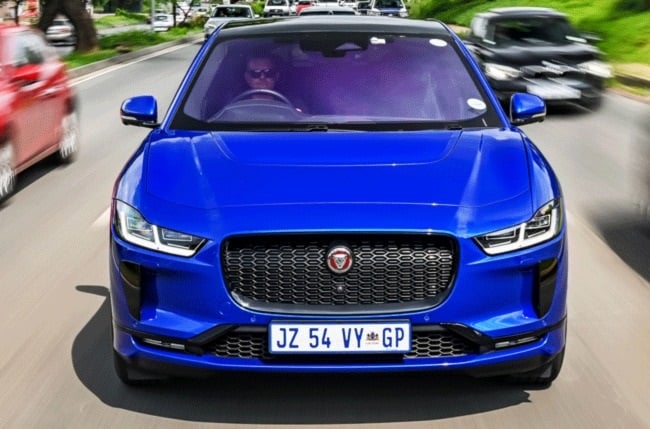
Weighing up the 'pros and cons' of electric versus petrol and diesel.
As the shift to mainstream electric vehicle acceptance edges closer, more and more motorists are weighing up the pros and cons of electric versus petrol and diesel. While internal combustion engines (ICE) still boast many benefits, electric vehicles are simply cheaper to run per kilometre.
To prove this point, Jaguar South Africa sent one of its senior driving instructors on a week-long mission to record and report the electricity consumption and cost per km (R/km) of a fully electric Jaguar I-Pace in a variety of real-world driving environments. To compare these costs against those of a vehicle fitted with a traditional internal combustion engine, the brand has developed a simple formula.
From motus.cars, supported by Motus Nissan (previously Imperial Nissan):
Filling up
The costs of filling EV batteries and ICE fuel tank might be irrelevant to the R/km comparison but it's worth knowing that electric vehicles win this fight hands down.
To charge a completely depleted I-Pace at your house will cost less than R200 based on current municipal rates in Gauteng. Filling the tank of a similarly sized ICE SUV will cost four times that, if not more.
The effect of different driving environments
While ICE vehicles suffer in slow-moving, stop-start traffic, it's this environment where EVs have an advantage. ICE vehicles will continue to burn fuel whether they are moving or not while EVs will consume almost zero electricity at standstill or when creeping along in bumper-to-bumper traffic.
"During my week with the I-Pace, I deliberately spent my morning and evening commutes in as much traffic as possible. The trip computer registered an average of 22kWh/100km in heavy congestion, which when calculated against my home electricity rates equates to around 44 cents per kilometre," said Andrew Blane, Senior Instructor, Jaguar Land Rover Experience Johannesburg.
"I had originally expected better results due to the fact that the I-Pace uses almost no energy when it is not moving, but at such low speeds it is not able to recuperate much energy through regenerative braking. EVs use momentum to put some charge back into their batteries, but in slow moving traffic there's not enough kinetic energy to capitalise on," added Blane.
As opposed to ICE vehicles, which are most efficient when cruising at low revs at high speed, EVS are least effective at steady speeds on the open road. Even so, the I-Pace returned favourable energy consumption and R/km figures in Andrew's test.
Hitting the open road
The energy an EV uses to cruise along at high, steady speeds varies greatly depending on average speeds. On the highway at 120km/h the I-Pace performed least efficiently. Prolonged periods on the throttle without regenerative braking resulted in an average electricity consumption of 24kWh per 100km, which still equates to a cost per kilometre of only 48 cents.
Extra urban
Electric vehicles thrive in environments with a balance of relatively high speeds and frequent braking, such as along the main arterial roads in South Africa's urban hubs or weekend jaunts to the country. The trip computer in the I-Pace registered averages of as low as 17kWh/100km in these conditions, which equates to only 34 cents per kilometre.
Averaging out
Most motorists drive on a variety of roads and driving environments, making fuel and electricity consumption averages the all-important figures to use as bases for comparisons between ICE and EV. For the Jaguar I-Pace this means an average of around 22kWh/100km, which equates to around 44 cents per kilometre when charged at home and using the national household average of around R2 per unit of electricity.
ICE in comparison
The cost per kilometre of petrol and diesel vehicles is an ever-changing calculation given the volatility of the fuel price. The price of fuel also varies depending on location, with coastal fuel prices slightly cheaper.
As example even fuel-efficient vehicles that use 5.0 litres per 100km costs R1.04 per kilometre to run and this increases to R4.17 per kilometre in a vehicle that uses 20 litres per 100 kilometres.
In comparison at the efficient end of the scale an EV using 15kWh per 100km costs just R0.30 per kilometre to run and R0.60 per kilometre at the higher end of the scale when it is consuming 30kWh/100km. This rough calculation makes an EV at least three times cheaper to run, but that figure only improves when compared to ICE vehicles that are heavier on fuel than 5.0 litres per 100km.
Visit motus.cars for more info and tips, or join the conversation on Facebook and YouTube.
This post and content is sponsored, written and provided by motus.cars




 Publications
Publications
 Partners
Partners










